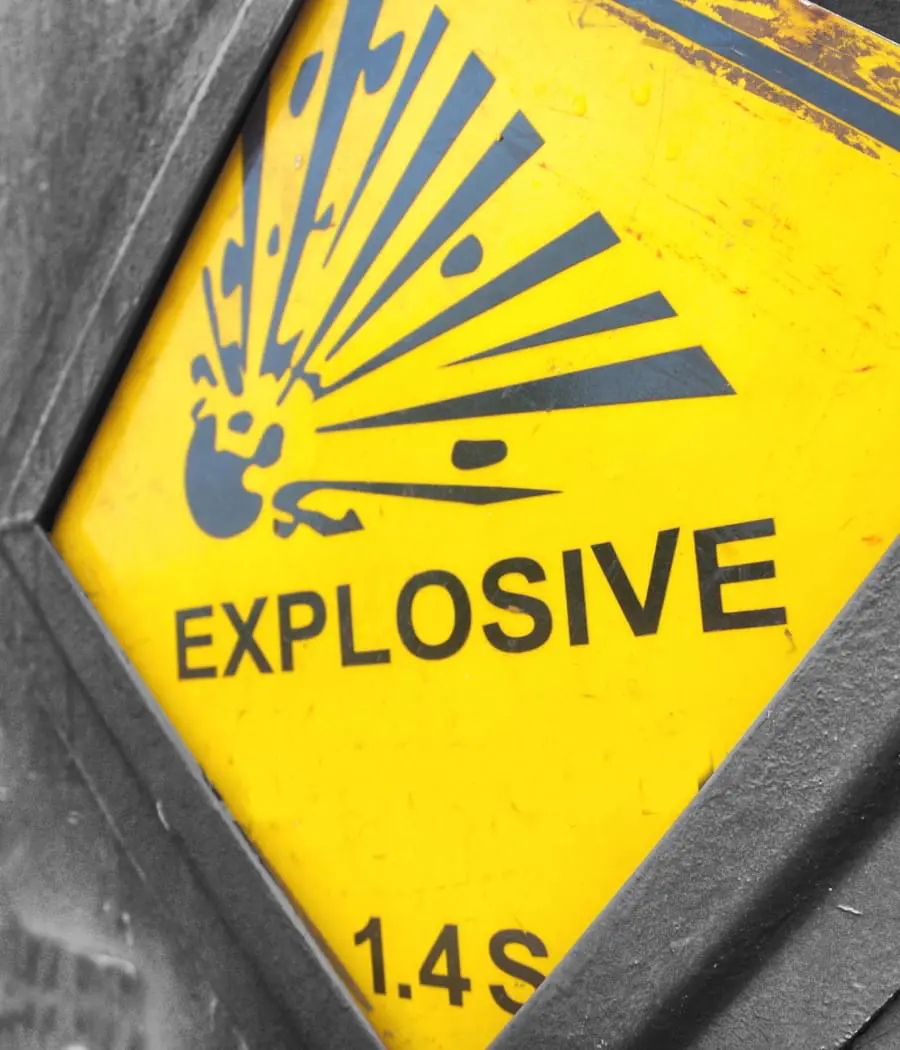




Quick Links:


Guidelines for Potentially Explosive Experiments
Some chemical compounds can be highly energetic/explosive, thus presenting significant hazards. Some classes of compounds can be sensitive and decompose into a violent release of energy and gas with the slightest input of energy (heat, light, friction, shock). Ask the following questions to determine if your experiment is potentially explosive.
According to the Occupational Safety and Health Administration (OSHA) nanomaterials are: “Engineered nanoscale materials or nanomaterials are materials that have been purposefully manufactured, synthesized, or manipulated to have a size with at least one dimension in the range of approximately 1 to 100 nanometers and that exhibit unique properties determined by their size.” Nanomaterials with all three dimensions under 100 nm are referred to as nanoparticles. Even though DNA and RNA can fulfill the definition of nanomaterial they are generally not considered nanomaterials.
The “Rule of Six” dictates that six carbon atoms (or other atoms of similar size) per energetic functional group in a molecule should provide enough dilution stability to render the compound safe.
If any compound in your experiment contains a hazardous bond and does NOT obey the “Rule of Six,” it may be explosive. Follow the safety recommendations outlined below.
Consider using alternate compounds or a different route that leads to the same destination.
For example, a distillation of diazomethane can be risky due to its explosive tendencies in bright light or when exposed to sharp/rough edges and scratched glassware. It is also highly toxic.
Trimethylsilyldiazomethane (CAS 18107-18-1) is a convenient and safer substitute.
In the example below, the synthetic route shown at the top forms a highly explosive organic azide as an intermediate, making the experiment dangerous. The second route at the bottom proceeds through a mesylate, which has no explosive properties.
If no alternative compounds or routes are available, and you have to run an experiment that involves a potentially explosive compound, make sure you fully understand the risks and how to control them before proceeding.
Oxygen balance is a term to express the degree to which an explosive can be fully oxidized and/or consumed and is usually denoted in negative (not having enough oxygen in the explosive molecule) or positive (having too much oxygen in the explosive molecule) terms. Explosive molecules with zero oxygen balance have the perfect balance of oxygen in the explosive. Explosives near zero oxygen balance tend to be the most powerful explosives.
Positive oxygen balance example: Glycerin trinitrate (aka nitroglycerin) 4C3H5N3O9 → 6N2(g) + 12CO2(g) + 10H2O(g) + O2(g)
The excess of oxygen gives the above explosive reaction a positive oxygen
balance, whereas the below explosive reaction has a negative oxygen balance due to incomplete consumed/oxidized products in the form of carbon monoxide and solid carbon.
Negative oxygen balance example: RDX 2C7H5N3O6 → 3N2(g) + 7CO(g) + 5H2O(g) + 7C(s)
When performing experiments where an explosion could occur, use a face shield, blast shield, or the hood sash to protect the body from flying chards of glass, metal, chemicals, heat, and gas. A properly chosen shield can provide sufficient protection without hindering your ability to manipulate the experiment. Be aware that the hood sash provides protection only against minor explosions.
Never perform potentially explosive experiments when alone in the lab. Inform your lab mates before starting the experiment.
The explosive decomposition of energetic compounds can be triggered by heat, mechanical stress, light, catalysts (e.g., metals), or sparks. The sensitivity to each factor varies with the compound. Often, the stability of a compound decreases with increasing concentration, and the pure or dry compound is the most sensitive to decomposition.
Thoroughly review the literature about the potentially explosive compound involved. If someone else has already done the experiment, contact the researcher to obtain safety-related information that might not have been recorded.
Talk to researchers who have successfully performed this or similar experiments to learn about the safety measures and precautions they took.
Perform a thorough hazard assessment before starting a new experimental procedure. To learn how to perform a Reaction Hazard Assessment, attending a session of Chemical Safety II is necessary. Check the Research Safety Teams training schedule for sessions or contact researchsafety@KAUST.edu.sa. Discuss the assessment with experienced researchers to make sure that all risks have been identified and that you understand how to address them. Engineering Controls and Work Practices
Be careful when concentrating large amounts of peroxide-forming solvents. Check peroxide levels with peroxide test strips. See the KAUST Laboratory Safety Manual for more information on peroxide-forming chemicals. Be alert when adding hydrogen peroxide to organic solvents as this can create very unstable organic peroxides such as TATP (triacetone triperoxide).